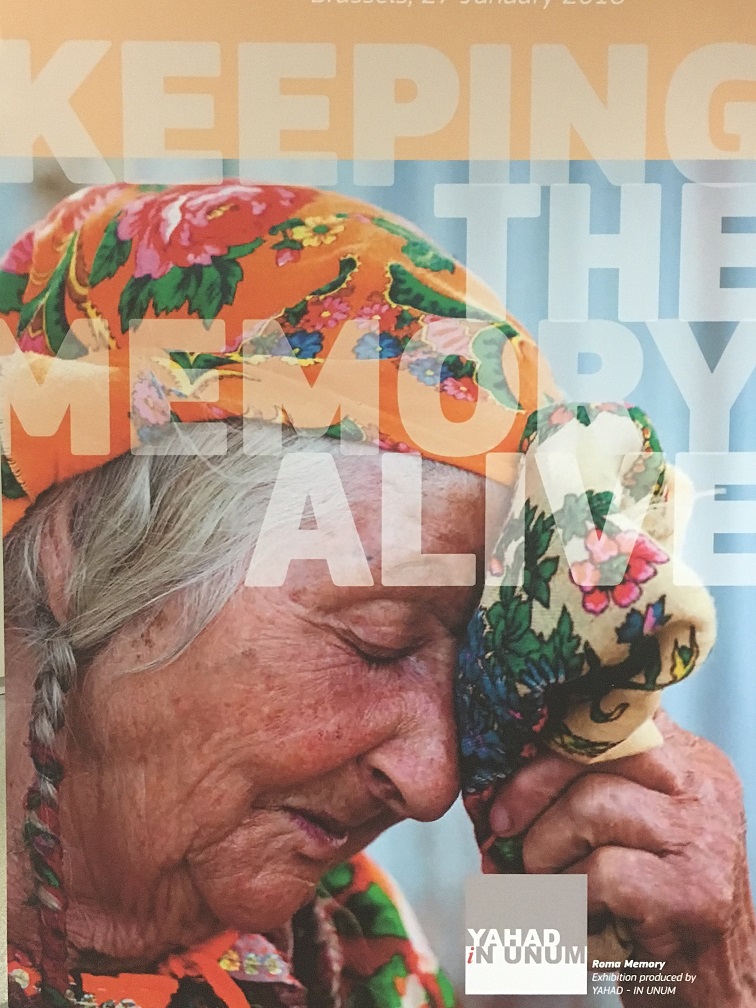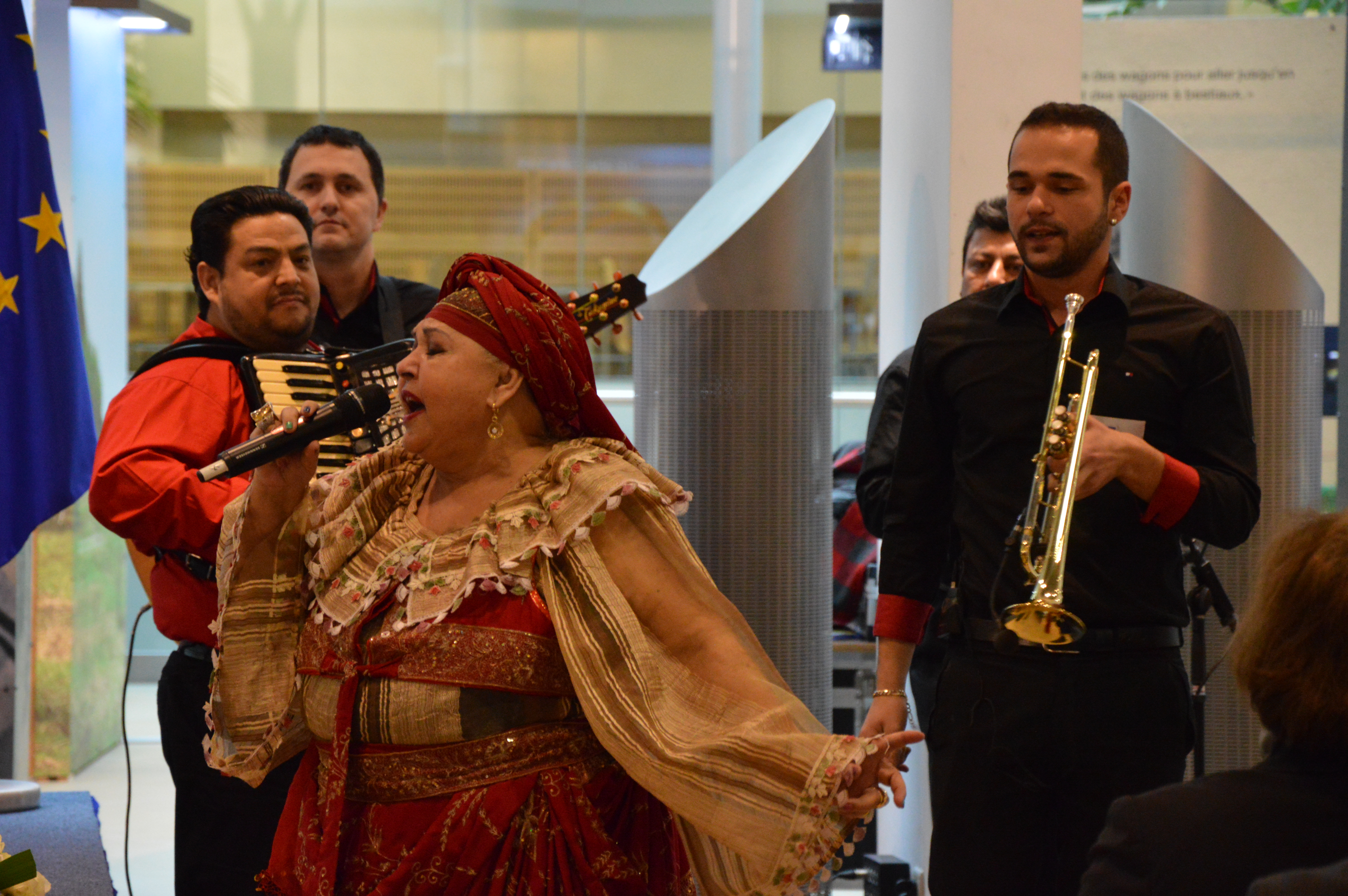Shining a light on the fate of the Roma under the Nazis

date: 14/03/2016
On the occasion of the International Holocaust Remembrance Day (27 January), the European Commission held a special event commemorating the Holocaust. This fifth edition was dedicated to the fate of the Roma during the Nazi regime: while the precise number of victims is still unknown, historians estimate that the Nazis killed around 25% of the Roma population of about 1 million people.
The story of the Roma from Carta
Nicolae Caldarar was born to a Roma family in the village of Carta, Romania, in 1934. His family was deported along with all the Roma in the village. In 1942, local policemen and Germans came to Carta to round up all the Roma. They were forced to leave their home village and walk towards Brasov to cross the Dniester River. Three months they spent on the road, guarded by police at all times, until they arrived at the Bug River. There, all their belongings were confiscated. They were detained in bunkers – shelters dug in the ground – in a field close to the river for two months.
 Nicolae Caldarar
Nicolae Caldarar
Occasionally, women would come by to bring food, but they would ask for what little clothes the Roma had left in payment, Mr Caldarar recalled. After two months, they changed location at the behest of policemen. Leaving in the middle of the night, they moved to a forest. It was winter and the lives of nearly 200 people were claimed by the cold. The rest were taken to a nearby village in the morning where he stayed for two years in a camp, Mr Caldarar explained, adding that he lost many of his family members there - grandparents, two aunts and three uncles. A large grave was dug in the village cemetery to bury all those who had not survived.
One morning, all of the guards were gone. At that point, Mr Caldarar and his fellow captives understood that they were free to go. They walked aimlessly until they reached some railroad tracks which they followed to a train station. On the way, however, many were killed by bombs. Mr Caldarar himself injured his foot, but was lucky enough to escape with his life.
A necessary reminder
"Your presence here serves as a reminder to all of us of the lessons of our not so distant past," Citizenship Commissioner Dimitris Avramopoulos told Mr Caldarar in his address. "There are many things we must remember. We must remember that democracy is not a given, it is the result of hard work, protecting the norms and values that are the foundations of our European project."
 Commissioner Avramopoulos
Commissioner Avramopoulos
Justice Commissioner Věra Jourová joined Mr Avramopoulos in calling for a stop to the discrimination of the Roma, which persists to this day. She added that "one of the things that pains me most is that over half of all victims had not yet turned 14. They were young children, bright futures were brutally taken from them. And it is our duty to ensure that their suffering is and will always be remembered, so as to never be repeated."
 Commissioner Jourova
Commissioner Jourova
Giving back the victims their dignity
Father Patrick Desbois, President of Yahad-in Unum (YIU), a French organisation founded to locate the sites of mass graves of the Jewish and Roma victims of the Nazi mobile killing units and co-organiser of the event, pointed out that YIU has so far found over 200 extermination sites in Russia, Belarus, Ukraine, Poland, and Moldova. However, most of the mass graves remain without any mark or monument until now. This is especially true for the Roma mass graves. There are only two sites for Roma – one in Russia, one in Belarus marked with modest monuments.
 Father Desbois
Father Desbois
They were killed like animals and until today are buried like animals, Father Desbois said and impressed on the audience that "we can never give them back their dignity if we do not recognise them as victims."
The family of his Romania-born colleague Costel Nastasie, YIU project manager on Roma Genocide research, also suffered great losses at the hand of the Nazis. He said: "Here today, the history of our people, the history of my family is finally integrated in European history. Here today, we lay the first stone for the dignity of the Roma, our people. Here today, I have immense hope that our children, your children will keep this memory alive."
Holocaust education
Holocaust education is an important part of these efforts to keep the memory alive. In this context, UNESCO and the European Commission, in partnership with the Georg Eckert Institute in Germany, are launching a new research project to assess the state of education about the Holocaust and other genocides in the European Union, DG Home Director Marta Cygan pointed out in her closing speech. Building on ongoing research, the study will analyse curricula, textbooks and pupils’ perceptions.
"The Commission is committed to keeping the memory of the Holocaust alive and will continue to support all relevant initiatives and organisations," Ms Cygan reiterated. She recalled that the Remembrance Strand of Europe for Citizens programme funds a significant number of projects across the European Union in the area of memory and remembrance. Many key organisations in the field of Holocaust education, research and commemoration including Yahad – In Unum are financed by the programme.
 Marta Cygan
Marta Cygan
Popular Macedonian singer and songwriter Esma Redžepova – nicknamed Queen of the Gypsies because of her contribution to Roma culture and its promotion – and her band the Folk Masters provided some musical accompaniment.
 Esma Redzepova and her band
Esma Redzepova and her band
The event also marked the inauguration of an exhibition entitled 'Roma Memory' dedicated to the history of Roma persecution during the Second World War which will remain at the Commission's Berlaymont building until 19 February.
 The 'Roma Memory' exhibition
The 'Roma Memory' exhibition
